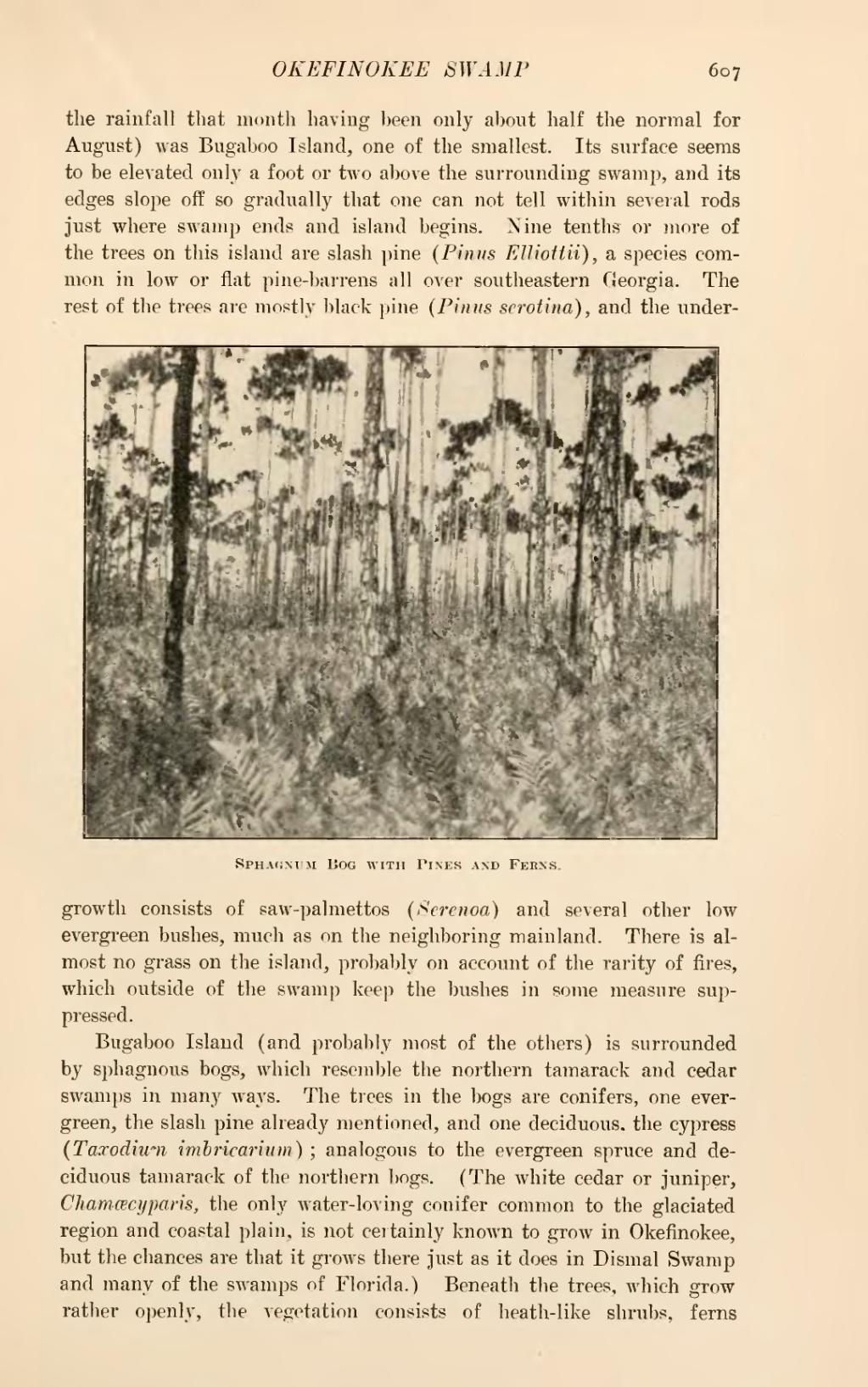the rainfall that month having been only about half the normal for August) was Bugaboo Island, one of the smallest. Its surface seems to be elevated only a foot or two above the surrounding swamp, and its edges slope off so gradually that one can not tell within several rods just where swamp ends and island begins. Nine tenths or more of the trees on this island are slash pine (Pinus Elliottii), a species common in low or flat pine-barrens all over southeastern Georgia. The rest of the trees are mostly black pine (Pinus scrotina), and the undergrowth
consists of saw-palmettos (Serenoa) and several other low evergreen bushes, much as on the neighboring mainland. There is almost no grass on the island, probably on account of the rarity of fires, which outside of the swamp keep the bushes in some measure suppressed.
Bugaboo Island (and probably most of the others) is surrounded by sphagnous bogs, which resemble the northern tamarack and cedar swamps in many ways. The trees in the bogs are conifers, one evergreen, the slash pine already mentioned, and one deciduous, the cypress (Taxodium imbricarium); analogous to the evergreen spruce and deciduous tamarack of the northern bogs. (The white cedar or juniper, Chamæcyparis, the only water-loving conifer common to the glaciated region and coastal plain, is not certainly known to grow in Okefinokee, but the chances are that it grows there just as it does in Dismal Swamp and many of the swamps of Florida.) Beneath the trees, which grow rather openly, the vegetation consists of heath-like shrubs, ferns


